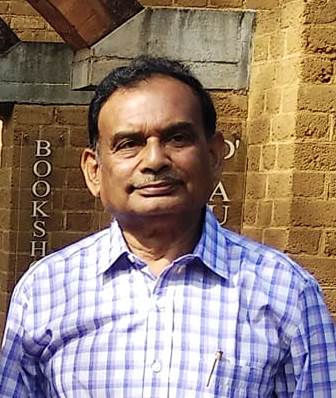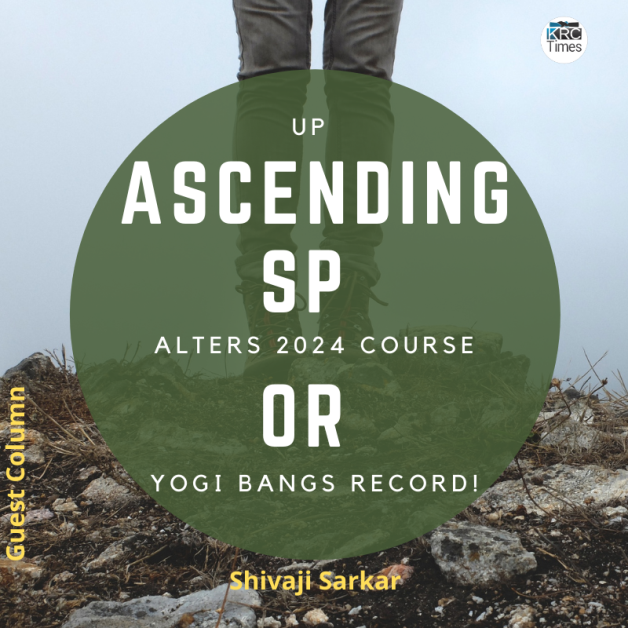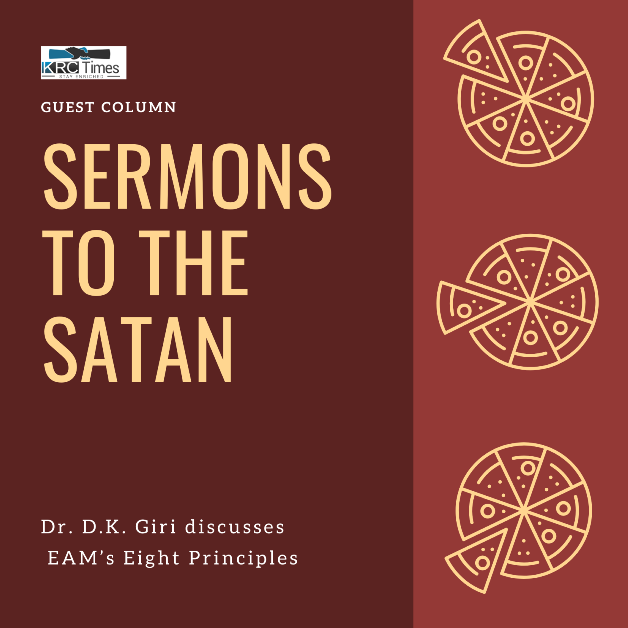A prediction is not easy but the contest is tough. March 10 will open up the cards and set the course to 2024.
 Shivaji Sarkar
Shivaji Sarkar

The way UP is flaring up before the first phase of elections, it may alter the course of 2024 national politics but the BJP has the strength to fight back.
UP Chief Minister Yogi Adityanath’s statement, “after March 10, garmi utar dunga, May, June me Shimla bana dunga – cool you down after March 10” has changed the poll tack. Rashtriya Lok Dal leader Jayant Chaudhury’s retort “people overwhelmingly stamping the handpump (RLD symbol) swamp the ballot box and shear the extra fat of BJP -charbi utar degi”, has warmed up the west UP poll. It has ignited debate on governance now and during the SP rule.
Acerbic expressions by both the camps ignite passion whether in Aligarh, Meerut, western UP, Allahabad, or Gorakhpur in the east. A poll observer Harjinder says that strangely the ruling BJP workers are lying low. “Maybe they were ignored by their government during the pandemic and today they are keeping off or might be it’s a new strategy”, says another west UP journalist Sanjeev.
The BJP holds the maximum seats in the west, says Dr Ravi Yadav but may now be in trouble. Eastern UP may be tougher as apart from OBCs even Brahmin strong groups are sliding away from BJP.
Yes, Yogi’s statement was in reply to Kairana RLD candidate Nahid Hasan that “people are warming up in Kairana and Muzaffarnagar – areas known for riots around 2013”. Yogi said that he would turn these areas into cold Shimla even in the heat of May and June. It is being seen as retribution if Yogi returns as CM, in the Jatland, as western UP is called. It has changed the otherwise normal poll campaign to an affront on Jat pride. It is to be seen how the voters react.
The mood seemingly is impacting many areas in eastern UP, which has the highest number of migrant workers ill-treated during the first phase of lockdown. The region with high poverty feels the pinch of rising prices. They were hit hard during demonetisation. Stray cattle are a bigger issue, both in the west and east as they devastate the farms. The BJP after coming to power its numbers swelled for its ‘gomata’ –cow is our mother – approach. Linguistic minorities like Bengalis and Punjabis are with BJP.
Congress leaders Priyanka Vadra and Rahul Gandhi’s effort to activate the party and possible tacit tie-up with SP can make some difference to its numbers. BSP has committed jatav votes but other dalits may split to other parties. The Hathras gang-rape and official violence incident may realign valmikis who voted BJP. So may Unnao incident in central UP.
Since 1985, UP has not reelected an incumbent government. If Yogi does he would establish a record. The BJP is not leaving it to chance. Even during the 2017 poll, the state did not see so many top BJP leaders campaigning. Home Minister Amit Shah is continuously visiting and is said to be the mastermind. Shah’s statement that if Saharanpur and Muzaffarnagar do not go his way ‘mushkil ho jayega’ is being treated as provocative. Prime Minister Narendra Modi addressed over 11 large rallies till the beginning of poll process attacking communal “samajwadis” keep SP in reckoning.
Deputy chief minister Keshav Prasad Maurya contesting from Sirathu near Allahabad faces hostile crowds as many ministers like Shrikant Sharma, Suresh Rana, Sangeet Some in the west. Sharma is being jeered all over in Mathura. Former central minister Mahesh Sharma was shooed away from his home village in Bulandhshahr for not visiting the area. In all these incidents, the BJP workers remained silent spectators. The SP-RLD has interestingly pitted Pallavi Patel, a good orator, and sister of central minister Anupriya Patel of Apna Dal against Maurya cornering him in the constituency.
Would it change the voting pattern that was overwhelmingly for BJP in 2017? Not easy to say. The state government’s reported dictat to government employees to coerce postal ballot voters has reportedly caused consternation as SP-RLD fight back and the poll staff now distance themselves.
The BJP is surprised by the way SP leader Akhilesh Yadav has done his social engineering. This has led the SP to penetrate hitherto impregnable areas like Agra and Mathura and many seats in the east. The diligent homework of Akhilesh helps SP have a wider alliance with caste groups beyond the Yadavs and his family. Similarly, Jayant Chaudhury has spread his wings and is emerging as more than Jat leader post year-long Kisan agitation. The kisan, gujar, pal, baghel, prjapati and similar other smaller caste groups move to SP-RLD.
There is also a conflict between ‘me’ doing in BJP and the ‘samajwadis’ in Akhilesh’s narrative. The SP-RLD accuses the BJP of grabbing credit for programmes of SP and other party governments.
Even Yogi himself is said to be roughing it up in Gorakhpur as his disciple Sunil Singh on SP ticket faces him and allegedly erstwhile area strongman, Hari Shankar Tiwari’s family opposes.
But there is a different aspect too. The minority votes lining up for the SP-RLD fuel passion for the BJP’s Hindutva, Ayodhya, Vindhyavasini temples, and now Krishna temple in Mathura. An Aligarh professor Sajjad says that overtly the minorities, Jats, and farmer groups appear to be together. But they may not be as cohesive as they appear. The voting may not reflect the overt mood.
RSS leader Indresh Kumar has activated his Rashtriya Muslim Manch to woo the Christians and Muslim minorities groups in Lucknow, Amroha, Moradabad, and now even in Goa, Uttarakhand and Manipur to help BJP. Kumar has had separate meetings with Muslim women and his media coordinator Shahid Sayeed says the women benefited by triple talaq annulment are with BJP. Many also have PM Awas houses.
The BJP has apparently now changed tack and is reaching each community at their bastions. Congress leader RPN Singh’s entry to BJP has made its defector Swami Prasad Maurya move from his stronghold Padrauna to another seat, Fazilganj.
The BJP in its run up to the 2024 Lok Sabha elections should not be taken lightly. It has organizational and official strength to bounce back. Its leaders say that even with lesser seats than 325 now it would have enough to be in power.
A prediction is not easy but the contest is tough. March 10 will open up the cards and set the course to 2024.
Advertisement | KRC Foundation





